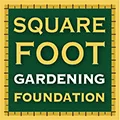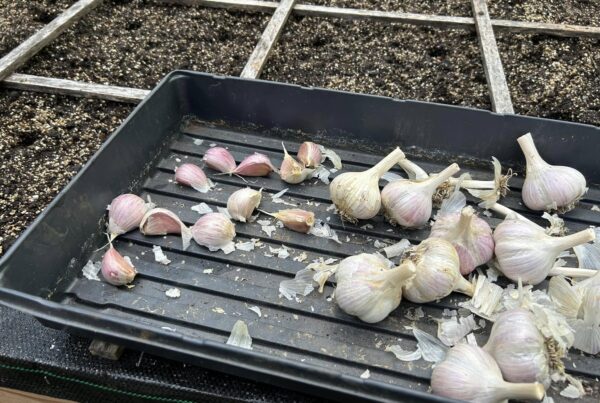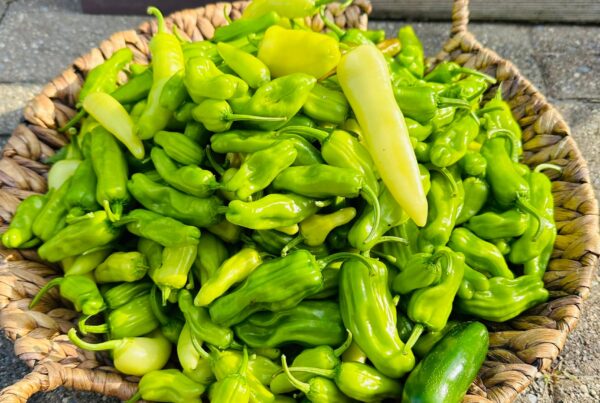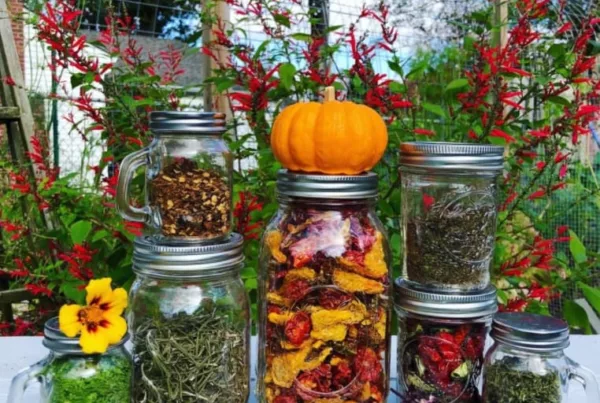Written by Kristina Hicks-Hamblin
Growing season may be winding down but Square Foot Gardeners are always for their next crop. So before you put in that seed order, why not save some of the seeds from your crops this year instead? These tips will show you how it’s done.
Best Crops for Saving Seeds
While you can save seeds from most vegetables, herbs, and flowers, the ones that are the easiest to save and that will provide the most reliable results come from plants that are:
Seeds to Save: Plants That Are Open Pollinated
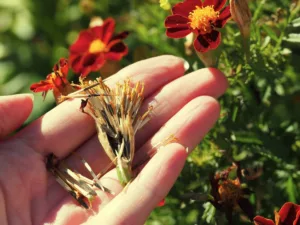 When you grow plants in your raised beds you’ll have the choice between open pollinated varieties and hybrids (also known as crosses).
When you grow plants in your raised beds you’ll have the choice between open pollinated varieties and hybrids (also known as crosses).
Open pollinated plants will grow true to type when you save seeds, while hybrids won’t. That doesn’t mean you can’t save hybrid seeds – you can, but the results won’t be predictable.
Seed packs will usually indicate whether a variety is open pollinated. Nursery starts, on the other hand, may not, so you might have to look up the variety name to find out whether it’s open-pollinated or not.
Self-Pollinated
Self-pollinated plants tend to grow true to type while those that are cross-pollinated usually don’t. Crops that are self-pollinated include lettuce, peppers, beans, peas, and tomatoes. On the other hand, squash, cucumbers, and melons are cross-pollinated.
That means that if you’re growing a zucchini and a pumpkin in your raised beds, these two will easily cross-pollinate and the next generation from either of these plants will likely look like a zucchini pumpkin mix.
So if you want to know what you’re saving without the hassle of isolating your crops, choose types that are self-pollinated.
Note: if you’re only growing one type of a certain plant and don’t have nearby neighbors growing another type of the same plant, you may not have to worry about this too much. But always be careful with the cucurbitaceae family. The results of their cross pollination are usually a big letdown.
Annuals

Dry green beans saved for seeds.
When following the Square Foot Gardening Method, spent plants are removed and replaced with freshly sown seeds or transplants.
That means that raised beds don’t tend to harbor biennial crops – those which require two years to produce seed. Examples of biennials include carrots, kale, parsley, and hollyhocks.
Focus on quality when saving seeds
Speaking of carrots – sometimes one of these veggies may bolt the first year, producing a flower stalk instead of a juicy root.
Should you take advantage of this mishap and save the seeds? The answer is no, and that’s because the genes in that particular carrot likely caused the early bolting.
Plant breeders select for traits like drought tolerance, and pest and disease resistance by saving seeds from varieties that perform beautifully in the face of difficulties, and you should do likewise!
So if you want to grow carrot roots you can eat, a bolted carrot is not one whose genes you want to pass on. Likewise with other vegetables. Select the plants that offered a high quality harvest. You want the best from the seeds you save.
Easiest Seeds to Save in Fall
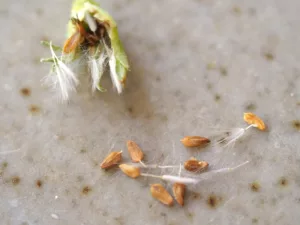
Close up of tiny lettuce seeds. Photo by Kristina Hicks-Hamblin.
Now you know the characteristics of crops that make for good seed saving.
While it will be up to you to choose produce of excellent quality and varieties that are open-pollinated, here are some annual vegetables, herbs, and flowers that are commonly grown in the Square Foot Garden, which are easy to save and tend to grow true to type:
Vegetables: beans, lettuce, peas, peppers
Herbs: cilantro, dill
Flowers: marigolds, zinnias, cosmos
Tips for Harvesting and Storing Saved Seeds from Your Garden
- Wait to harvest seeds until they are completely mature. The signs of maturity will vary depending on the type of plant. The flower heads of cilantro, dill, marigolds, zinnias, cosmos, and lettuce will dry and turn brown, fruits like peppers will ripen to red, purple, or orange, and the pods of peas and beans will dry and turn brown.
-
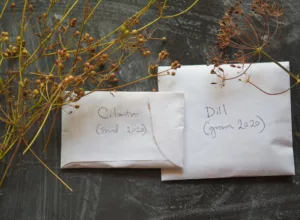
Used envelopes make great seed packets.
Collect seeds on a dry day, and not first thing in the morning when plants are covered with dew.
- For herbs like cilantro and dill, snip off whole seedheads and place them in paper bags to allow them to dry out. Seeds will release from the heads as they dry and fall to the bottom of the bag.
- For lettuce and flowers like zinnias, marigolds, and cosmos, collect dry flower heads in paper bags, then break open the dried flower heads to remove the seeds inside.
- After collecting, beans and peas can be removed from their dry pods and laid out to dry on a flat surface.
- Remove the seeds from the chaff. This is easier when you know what the seed looks like, so think back to when you planted the crop or do a quick internet search to check and see.
- Place the seeds in a single layer on a flat surface, such as a plate or mesh drying rack, then place in a dry location, away from direct sunlight, to continue drying out.
- Drying time will vary depending on the conditions in your home. After a couple of weeks, test a seed by bending it or pressing a fingernail into it. Seeds that bend or indent need more time drying.
- Once they are fully dry, package them in small plastic or paper packets. I like to reuse discarded envelopes to make my own paper seed packets.
- Make sure to label the packet with the type of plant, the variety if known, and the year harvested.
- Store the seeds in a dark, dry, pest-proof location.
The length of viability will vary depending on the type of plant, but most will be good for at least the next two years. You can check viability for particular plants with our free cheat sheets!
Top photo by Kristina Hicks-Hamblin.
